Shoulder Rehab Program
GET YOUR shoulder REHAB DONE RIGHT THE FIRST TIME AROUND
Our Shoulder Rehab program takes the professional-sports approach to rehabbing your Shoulders, with a proven track-record of dramatically reducing your risk of re-injury and getting you back to sport, faster.
Our Team Has Been Trusted By

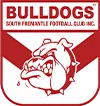
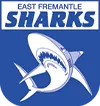
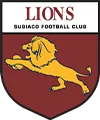


"the global average for shoulder re-injury stands at 90%..."
ours is less than 1%*
Find Out Why Most Athletes Rehab Fails to Get Them Back To Pre-Injury Form, and How Our Shoulder Rehab Program is Defying The Global Statistics When You Watch This Video
WHY CHOOSE US?
here is why over 100 athletes chose us for their shoulder rehab
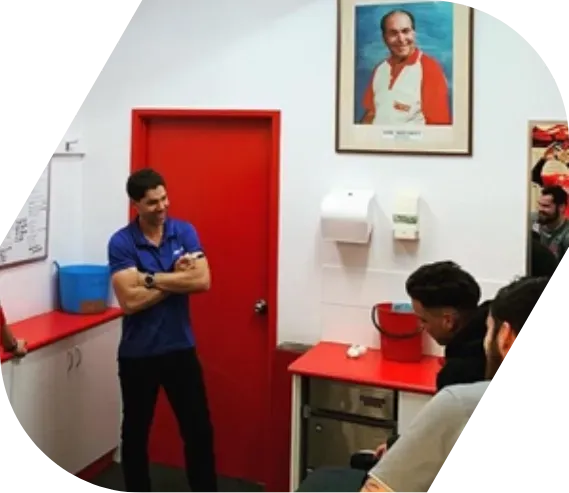
get a completely individualised shoulder Rehab program that's updated every week
... Not just a few exercises on a piece of paper you get once a month.
never have to second guess if you're doing your shoulder rehab right with unlimited access to our rehab coaching schedule
... with over 25 hours of rehab coaching every single week, YOU will NEVER FEEL LIKE YOU MIGHT BE doing your rehab wrong.
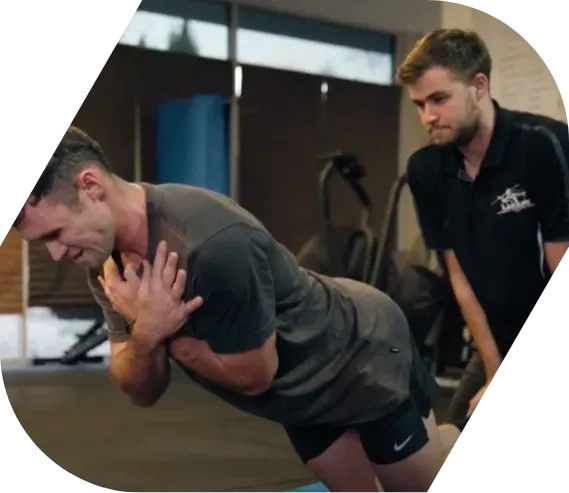
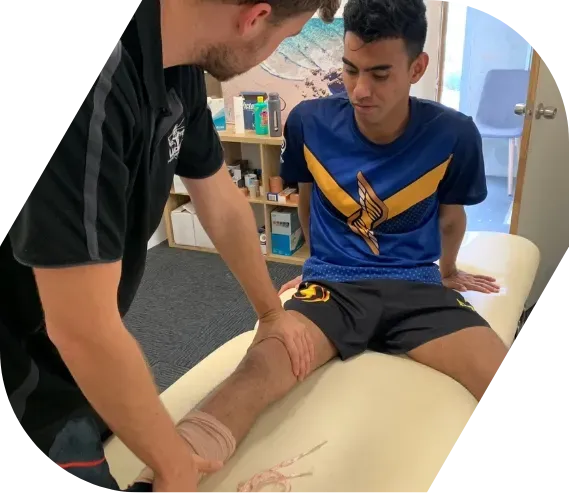
your strength, power & fitness won't have to take a backseat while you recover from your shoulder injury.
... Because you'll still be training as much as you want to, getting stronger and fitter than you were before your injury.
24-7 access to your dedicated physiotherapist, so you never have to feel like your shoulder progress is slowing down between sessions
Getting advice from your physiotherapist about your knee should never be something you have to wait for, so we give you 24/7 access...
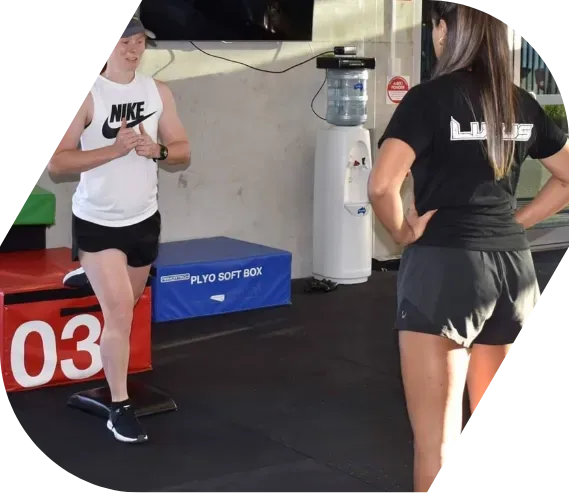
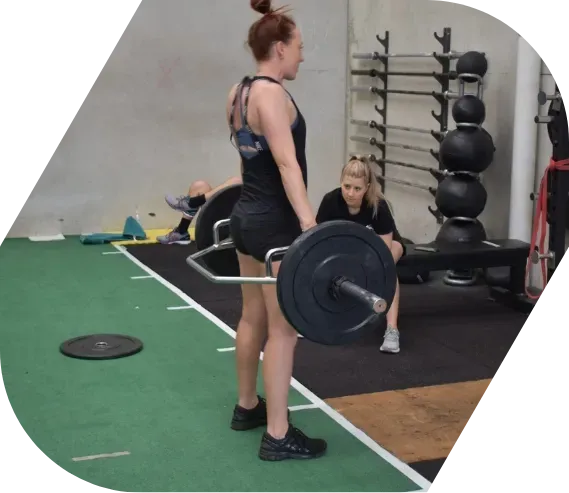
Your own FEILD-BASED coach who will be there for every run/CONTACT you do as you work toward your return.
... Because returning to running and contact by yourself following a shoulder injury isn't just lonely... It also means you might develop inefficient or compensatory running/tackling patterns which might hold you back.
mental skills training will help make sure that headnoise doesn't get the better of you...
Because a long shoulder rehab doesn't just take a toll on the body, but on the mind as well.
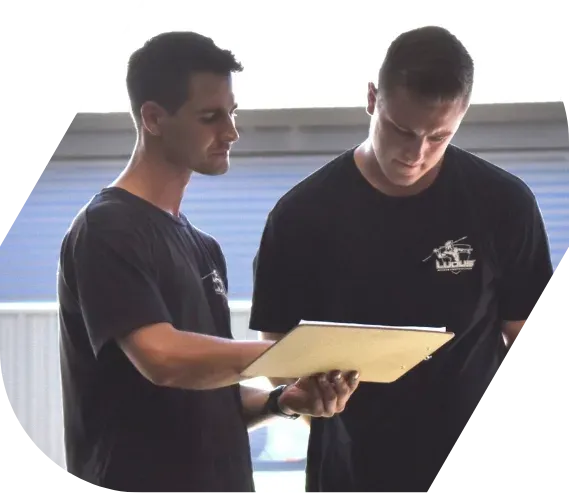
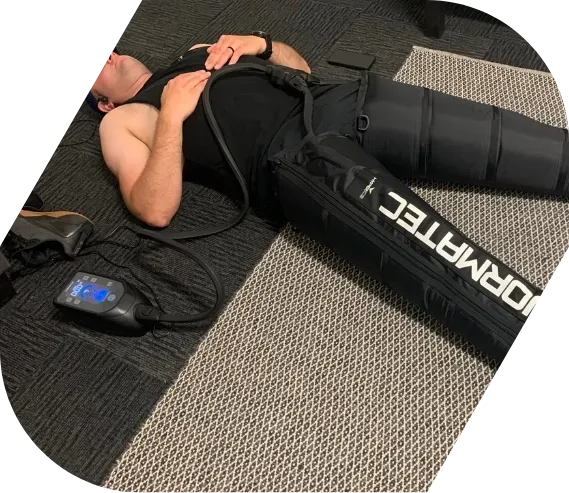
Unlimited Access To Our Recovery Zone will make sure that as your training gets harder, you recover faster.
Use our GameReady ice machines to reduce swelling and inflammation, the ice bath to enhance recovery between sessions, and the NormaTec compression boots to promote healthy blood flow again. Combined, our recovery tools make your shoulder rehab faster and easier.
your shoulder rehab success is guaranteed or your money back.
If you're not head over heels thrilled with your initial consult or our approach to your injury, we'll refund your all of the money of your initial consult... No questions asked.
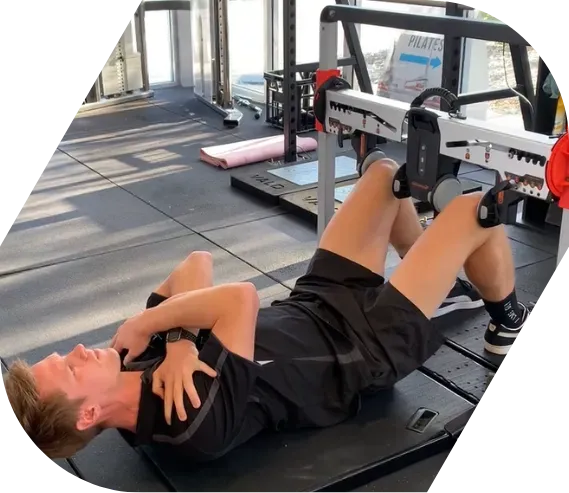
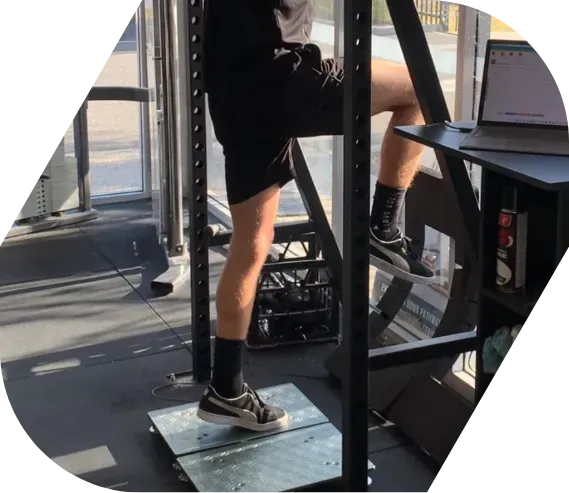
BUT THE BEST BIT? when you're surrounded by other athletes just as committed as you are to rehabbing their shoulder...
Your success is inevitable.
Testimonials
HEAR WHAT MORE OF OUR ATHLETES HAVE TO SAY ABOUT THE RECONDITIONING PROGRAM
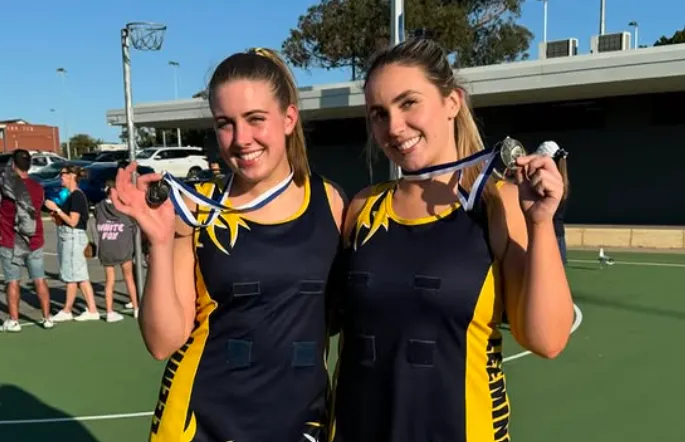
"I hurt my shoulder after falling on it in the Grand Final. I booked in the guys at Ludus because one of my teammates was doing doing her rehab with them as well. The process was so simple and before I knew it I was back doing things I enoy like swimming and gym training. By the time Netball season started again I was fully recovered, I was also fitter and stronger than ever."
Jenna Klemm
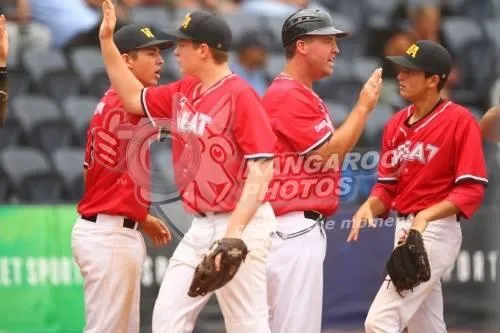
"My pain decreased by 50% in the first 3 weeks, which allowed me to do more things earlier. There's always coaches around to make sure I'm doing the exercises correctly, that really helped my rehab progress."
BEN DREW
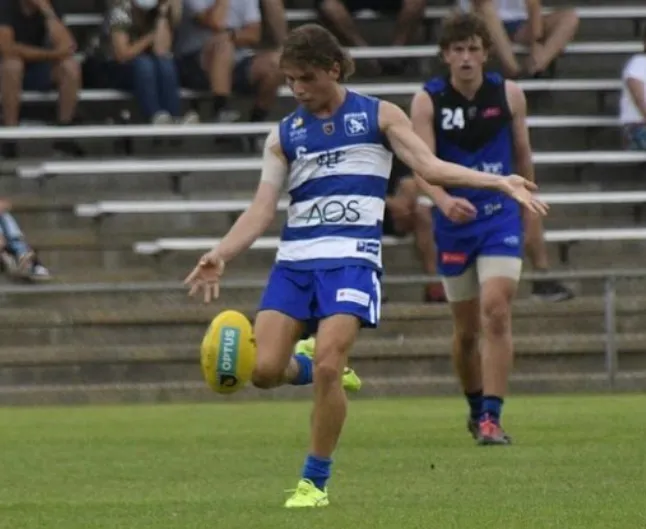
"I first came to Ludus in July 2022 following a full shoulder reconstruction. Following surgery, I knew I’d need to get to work if I was to return to the footy field stronger than before. Starting with very modest loads for my shoulder, I was patient and persistent with my rehab, always trusting the process and using the time to increase my strength and athleticism in other areas.
Early on, I pressing a 10kg dumbbell in one hand, and a 5kg in the other; a few weeks later, it was 12.5kg and 10kg; before I knew it I was pressing two 17.5’s with no strength difference from left to right!"
LUCA DAMATO
25+
TEAMS WORKED WITH
40+
YEARS OF COMBINED EXPERIENCE
500+
ATHLETES COACHED
FAQS
Frequently asked questions
All About SHOULDER INJURY
Why are SHOULDER re-injury rates so high?
Shoulder re-injury rates are high due to a combination of anatomical, biomechanical, and functional factors:
High Mobility, Low Stability – The shoulder joint (glenohumeral joint) has the greatest range of motion in the body, making it inherently unstable and more susceptible to re-injury.
Poor Healing and Tissue Quality – Structures like the rotator cuff and labrum have limited blood supply, leading to slower healing and increased risk of re-tears.
Recurrent Dislocations – Once a shoulder is dislocated, the ligaments and labrum often do not fully restore their original strength, leading to higher recurrence rates (up to 90% in young athletes).
Strength and Muscle Imbalances – Weakness or imbalance between stabilizing muscles (e.g., rotator cuff, scapular stabilizers) can create excessive stress on the joint, increasing re-injury risk.
Incomplete Rehabilitation – Many athletes or patients return to activity before full strength, stability, and mobility are restored, making them more vulnerable.
Overuse and Improper Mechanics – Sports like baseball, swimming, and weightlifting involve repetitive overhead motions, putting constant stress on the shoulder, leading to chronic instability and re-injury.
Surgical and Non-Surgical Outcomes – Even after surgery, some procedures (like rotator cuff repairs) have significant failure rates due to continued stress, improper rehab, or poor biological healing.
Why are Shoulder injury rates increasing?
Shoulder injury rates are increasing due to several key factors:
Increased Sports Specialization & Year-Round Play
More young athletes are specializing in a single sport early, leading to repetitive stress injuries.
Overhead sports like baseball, swimming, and volleyball put continuous strain on the shoulder.
Higher Training Loads & Intensity
Strength and conditioning programs are pushing athletes harder, sometimes beyond their structural limits.
Poor load management leads to fatigue, altered mechanics, and increased injury risk.
More Sedentary Lifestyles & Poor Posture
Increased screen time and poor posture (e.g., rounded shoulders, forward head position) contribute to weakness in key stabilizers like the rotator cuff and scapular muscles.
This creates imbalances that make the shoulder more vulnerable to injury.
Insufficient Recovery & Rehabilitation
Many athletes and active individuals return to play too soon, before fully regaining strength, mobility, and coordination.
Inadequate recovery times between training sessions increase cumulative shoulder stress.
Advancements in Diagnosis & Awareness
Improved imaging (MRI, ultrasound) and greater awareness among athletes and medical professionals mean more injuries are diagnosed than in the past.
What was once overlooked as "normal soreness" is now identified as a structural issue.
Aging Population & Increased Activity Levels
More adults and older populations are staying active longer, leading to higher rates of overuse injuries (e.g., rotator cuff tears, arthritis).
Many continue intense activities without proper shoulder maintenance.
What does the research say you should do to rehab your SHOULDER?
Effective shoulder rehabilitation for athletes involves a structured, evidence-based approach tailored to the specific injury and individual needs. Key components include:
1. Early Motion and Controlled Activity
Initiate passive range-of-motion exercises soon after injury or surgery to prevent stiffness. For instance, after a SLAP repair, active-assisted exercises might begin around four weeks post-operation.
2. Progressive Strengthening
Focus on strengthening the rotator cuff and periscapular muscles. Begin with isometric exercises and advance to isotonic movements, emphasizing external rotation and scapular stabilization. The American Academy of Orthopaedic Surgeons provides a comprehensive conditioning program, including exercises like shoulder external rotations and internal rotations.
3. Neuromuscular Control
Incorporate proprioceptive exercises and rhythmic stabilization drills to enhance joint stability and coordination. These activities improve the shoulder's dynamic stability, crucial for athletic performance.
4. Sport-Specific Functional Training
Gradually introduce sport-specific drills to prepare the shoulder for the demands of athletic activities. For overhead athletes, an individualized throwing program may commence between 12 to 16 weeks post-injury, depending on recovery progress.
5. Comprehensive Rehabilitation Protocols
Utilize established rehabilitation protocols from reputable institutions to guide the recovery process.
6. Prevention and Maintenance
Implement preventive strategies, including regular strengthening exercises, proper technique, adequate rest, and attention to overall shoulder health, to reduce the risk of re-injury.
It's essential for athletes to work closely with healthcare professionals to develop a personalized rehabilitation plan, monitor progress, and adjust the program as needed to ensure a safe and effective return to sport.
What are my options to rehab shoulder?
You have several effective rehabilitation options to recover from shoulder injuries, focusing on reducing pain, restoring strength and flexibility, and preventing re-injury. A well-structured rehab plan should be progressive, evidence-based, and tailored to the severity of the injury. By following a comprehensive, progressive rehab protocol that targets strength, flexibility, neuromuscular control, and mechanics, you can reduce recovery time and minimize the risk of re-injury.
can athletes get back to sport without doing physiotherapy?
While it is possible for athletes to return to sports without physiotherapy or strength training, this approach carries a higher risk of incomplete recovery and re-injury. Addressing the root causes of shoulder injuries through strength, flexibility, and biomechanical correction is essential for sustainable performance and injury prevention. If avoiding formal interventions, athletes should at least incorporate basic self-care measures and gradual progression to improve their chances of success.
how can I tell if I have a shoulder injury?
An athlete can identify a serious shoulder injury by recognizing key red flags that indicate structural damage. Here’s what to watch for:
1. Persistent or Severe Pain
Sharp or deep aching pain that doesn’t improve with rest.
Pain that worsens at night or interferes with sleep.
Intense pain with specific movements (e.g., overhead, throwing).
2. Limited Range of Motion
Difficulty lifting the arm above the head or across the body.
Feeling of stiffness or “catching” in certain positions.
Loss of mobility that doesn’t improve with stretching.
3. Weakness or Instability
Sudden or progressive loss of strength, especially in overhead movements.
Arm feels like it might "give out" or is unstable under load.
Difficulty performing basic tasks like lifting objects or pushing off surfaces.
4. Popping, Clicking, or Grinding
Audible or palpable sensations inside the joint, especially with movement.
Can indicate labral tears, cartilage damage, or rotator cuff issues.
5. Numbness, Tingling, or Radiating Pain
Symptoms extending down the arm or into the neck.
May indicate nerve impingement, a herniated disc, or brachial plexus injury.
6. Visible Deformity or Swelling
Shoulder appears misaligned or dislocated.
Noticeable swelling, bruising, or a lump around the joint.
7. Repeated Dislocations or Subluxations
History of shoulder slipping out of place, even momentarily.
Increased frequency of instability episodes.
8. No Improvement with Rest & Rehab
Symptoms persist despite conservative treatments (ice, rest, mobility work).
Pain or dysfunction lasts more than 2–3 weeks without improvement.
How long does it take for my shoulder to heal before I return to sport?
The recovery timeline for a serious shoulder injury depends on the type and severity of the injury, treatment approach, and sport demands. Here’s a general breakdown:
1. Shoulder Dislocation or Instability
Non-Surgical: 6–12 weeks (if first-time dislocation)
Surgical (Labral Repair or Latarjet Procedure): 4–6 months
Return to Contact Sports: 6–9 months. Factors Affecting Recovery: Younger athletes and contact sport athletes (football, rugby) face higher re-injury risks, often requiring surgery for long-term stability.
2. Rotator Cuff Tear
Partial Tear (Non-Surgical): 3–6 months (PT-focused rehab). Surgical Repair: 6–12 months
Return to Overhead Sports: 9–12 months. Risk: Full-thickness tears have a high re-tear rate (up to 40%) if rehab is rushed or inadequate.
3. SLAP Tear (Superior Labrum)
Non-Surgical: 3–4 months (if mild)
Surgical (Labral Repair or Debridement): 5–9 months
Throwing Athletes: 9–12 months before full velocity return. Challenge: Overhead athletes (baseball, tennis, swimming) take longer due to the high demands on the labrum.
4. AC Joint Separation (Shoulder Sprain)
Grade 1-2 (Mild-Moderate): 2–6 weeks
Grade 3 (Severe, Non-Surgical): 6–12 weeks
Surgical (Grade 4-5): 4–6 months
5. Fractures (Clavicle, Scapula, Humerus)
Non-Surgical: 6–12 weeks (depends on bone healing)
Surgical (Plate & Screws): 4–6 months
Contact Sports Return: 6+ months
Key Factors Affecting Return to Sport
✅ Injury Severity & Type – Soft tissue injuries (labrum, rotator cuff) take longer than fractures.
✅ Rehabilitation Quality – Gradual strength, stability, and mobility progression is critical.
✅ Sport-Specific Demands – Overhead athletes take longer than non-overhead sport athletes.
✅ Surgical vs. Non-Surgical – Surgery often extends recovery but may be necessary for full function.
General Guidelines for Full Return to Play
Pain-Free Full Range of Motion
At Least 90% Strength Compared to Non-Injured Side
Sport-Specific Testing Without Compensation
Clearance from a Sports Medicine Professional
ACCESSIBILITY
Where are you located?
For shoulder rehab in Perth: We’re located at Unit 1/9 Malland Street in the heart of Myaree. We’re just 3 minutes walk from the Marmion St before Marr St bus stop.
What are your open hours?
Our training facility is open for coaching sessions Monday-Saturday with classes starting between 6:00 am and finishing at 7:00 pm.
For a copy of the current coaching, please reach out to us via our contact form.
Our shoulder Rehab Program
How does this differ from standard physiotherapy?
The traditional approach for shoulder rehab revolves around session-to-session care; where you pay for a single consult, get advice, and return at agreed-upon intervals with your practitioner. Typically, the sessional approach does not support you with training and advice outside the consult, meaning you spend more time by yourself. Our approach turns that idea on its head — rather than paying each time you see us, you pay one fixed weekly cost, and you can see us as often as you'd like (some athletes are at our facility 5x per week!). This approach means that you get all the support you need, whenever you need it. This results in great shoulder rehab outcomes for our athletes and better support along the way.
How long does the shoulder rehab program go for?
We'll support you for the length of your shoulder rehab and even past your return to sport date if you want us too! Typically it will take between 3 and 6 months depending on the severity of the injury.
What does your shoulder rehab program include?
Our shoulder rehab program includes everything you need to return to sport with confidence:
Unlimited physiotherapy support and care
Unlimited coaching across 25 hours a week on the gym floor
Weekly, individualised programming
Your own running coach to help you get back on the pitch or court
Unlimited access to recovery services, like GameReady, NormaTec compression boots, and our icebaths and sauna
All your staged exit testing using our sports science technology
Mental skills support to help you rebuild your confidence
Nutrition support to help you stay in shape and recover faster
And most importantly, a great community of other like minded athletes
I didn't see an option for online shoulder rehab. Do you do that
In some cases, we do look after athletes remotely. If you live interstate or can’t make it to the facility, please reach out to us and we’ll assess if we can help. Most of the time, we’ll refer you to a coach we recommend in your city, because nothing beats coaching and accountability in the flesh. However, if you really want to work with us, we can explore that option with you, utilising telehealth, video coaching, and other remote technologies.
PRICING
What is the price for the shoulder rehab program?
We value transparency in pricing. We have a simple price structure -- pay $167 per week, and get everything you need (see our full inclusions above).
If I pay upfront, do i get a discount?
Yes. When you prepay for the term, you’ll receive an additional 10% off our advertised weekly price.
I don't like direct debit (the big commercial gyms ruined it for me). What are my options?
We totally understand. Ryan worked at big commercial gyms and understands how a lot of trust has been lost with gyms and direct debit (DD) memberships. If you don’t feel comfortable setting up a DD with us, prepaying for your shoulder rehab is still an option.
Pricing
WHAT’S YOUR INVESTMENT?
sports rehab program
Unlimited Support From Our Physiotheraphy Team
$167.00/ week
Free individualised rehab program That Updates Every Single Week on our training app ($97 weekly value p/w)
Free individualised return to running program ($47 Value P/W)
Free return to run coaching out on field ($97 value p/w)
Free unlimited coaching with over 25 Hours per week ($97 value p/w)
Free 24/7 support & direct access to our physiotherapy team ($47 Value P/W)
Return to contact coaching out on field ($47 value p/w)
Free gym membership ($27 value p/w)
Free access to our recovery zone ($47 value p/w)
Free Recovery Protocols ($297 Value)
Free Master Your Mental Game Online Course ($997 Value)
Free Nutrition coaching ($97/session value)
Free Macro Rehab Plan & Goal Setting Following Our 5-Phase Rehab Model ($297 Value)
*Our re-injury rate is less than 10% in athletes that rehab with us, and continue to train with us following their return to sport. **Your statement will be sent to you so you can claim with your private health fund or sports insurance.
session-to-session pricing
60/30 mins
$167.00
Subjective Assessment
Physical Examination & Diagnosis
Individualised Treatment
Plan of Management
*Following your consultation, your private health care fund will be swiped and the gap will be charged. The best option for athletes who can't make it regularly to the facility to take advantage of our fixed-fee sports rehabilitation programs.
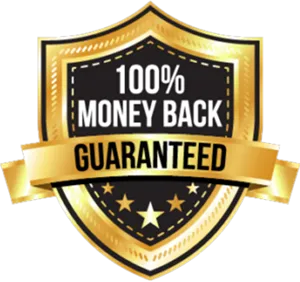
OUR Money Back GUARANTEE
We Are The Only Performance Facility In Perth To Put Our Money Where Our Mouth Is…
We stand by our results. If after your first performance re-assessment you haven’t improved, we’ll give you 100% of your money back. We don’t make excuses, we just get results. If you aren’t head over heels thrilled with your training experience with us, then we don’t deserve your money. Simple. There is not a stronger guarantee than this in the market.
What Makes This Program Great?

Our high-performance strength and conditioning facility
was built with the athlete in mind. When you complete your rehab with us, you'll get immediate access to every resource you need to accelerate your rehabilitation and helps you return to sport with confidence.

You'll receive round-the-clock support
from both the rehab and performance team. Unlike the traditional physio model, you'll never have to wait until 'the next available booking' to get the answers you need.

We only look after athletes
so you'll get the benefit of feeling like you're 'in the right place.' Instead of sharing a room with the elderly or officeworkers, you'll be rehabilitating alongside amateur, elite, and pro athletes all wanting to get back to doing what they love.

With a fixed weekly cost
there are never any surprises. Instead of paying for your gym membership, an individualised strength and conditioning program, weekly physiotherapy and recovery services separately, it's all included in a price that makes it affordable for almost everyone.

You'll get full access to our coaching timetable
so all your strength and conditioning, as well as your rehab runs (where applicable), will be coached by experts. You'll never have to do anything yourself (or worry you'll do something wrong), and you'll always have the support of an expert eye making sure you move well, efficiently and correctly.
STORIES OF SUCCESS
Hear Our Athletes Share Their Stories And How The Performance & Reconditioning Programs Helped Them With Their Success.

View our Schedule
When you join our Sports Rehab program, you’ll get unlimited access to our rehab coaches who will help you rebuild your strength and capacity in the gym, and, out on the field. View our schedule below.
Want to talk to our head of medical first?
We know that making a decision about where to rehabilitate your sports injury is a decision you can’t take lightly. That’s why we’d encourage you to have a no-obligation, free call with our Head of Medical services first to see how we can help. Request a call back by clicking the button below.
GYM HOURS
Monday- Thursday 6am-8pm
Friday 6am-7pm
Saturday 8am-11am
CONTACT US
Unit 1/9 Malland Street, Myaree
[email protected]
Website & Marketing Powered By Gymini

